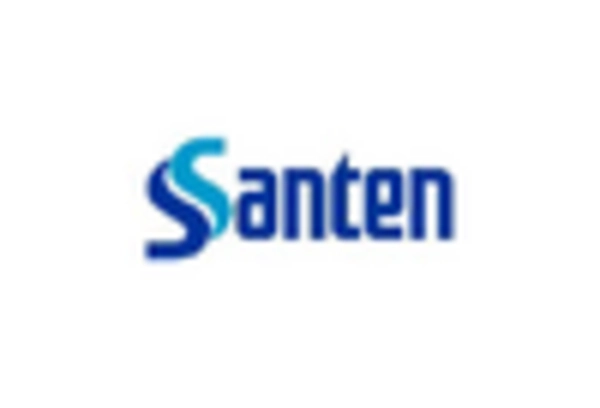Rising Prevalence of Optic Nerve Disorders
The increasing incidence of optic nerve disorders is a primary driver for the Optic Nerve Disorders Treatment Market. Conditions such as optic neuritis, glaucoma, and ischemic optic neuropathy are becoming more prevalent, potentially due to factors like aging populations and lifestyle changes. According to recent data, the prevalence of glaucoma alone is projected to reach 76 million cases by 2025. This surge in cases necessitates innovative treatment options, thereby propelling market growth. As healthcare systems adapt to these rising numbers, investments in research and development for effective therapies are likely to increase, further stimulating the Optic Nerve Disorders Treatment Market.
Growing Awareness and Education Initiatives
Raising awareness about optic nerve disorders is crucial for the growth of the Optic Nerve Disorders Treatment Market. Educational campaigns aimed at both healthcare professionals and the general public are becoming more prevalent. These initiatives focus on the importance of early detection and treatment of optic nerve conditions, which can significantly impact patient outcomes. As awareness increases, more individuals are likely to seek medical attention, leading to higher demand for treatment options. This trend is supported by various organizations that are actively promoting education on eye health. Consequently, the Optic Nerve Disorders Treatment Market may experience a notable uptick in demand as awareness continues to grow.
Emergence of Personalized Medicine Approaches
The shift towards personalized medicine is emerging as a key driver in the Optic Nerve Disorders Treatment Market. Tailoring treatment plans based on individual patient profiles, including genetic and environmental factors, is gaining traction. This approach not only enhances treatment efficacy but also minimizes adverse effects, leading to improved patient satisfaction. As research progresses, the development of targeted therapies for specific optic nerve disorders is likely to expand. The market is projected to benefit from this trend, with personalized treatment options potentially accounting for a larger share of the overall market. This evolution in treatment paradigms is expected to significantly influence the Optic Nerve Disorders Treatment Market.
Increased Investment in Healthcare Infrastructure
Investment in healthcare infrastructure is a significant driver for the Optic Nerve Disorders Treatment Market. Governments and private entities are increasingly allocating funds to enhance healthcare facilities, particularly in ophthalmology. This trend is evident in various regions, where initiatives aim to improve access to specialized care for optic nerve disorders. Enhanced infrastructure facilitates the availability of advanced diagnostic tools and treatment options, thereby improving patient outcomes. As healthcare systems evolve, the demand for specialized treatments is expected to rise, potentially leading to a market growth rate of around 6% annually. This investment trend is likely to bolster the Optic Nerve Disorders Treatment Market.
Technological Advancements in Treatment Modalities
Technological innovations are transforming the landscape of the Optic Nerve Disorders Treatment Market. The advent of advanced imaging techniques, such as optical coherence tomography, allows for earlier diagnosis and better monitoring of optic nerve conditions. Furthermore, the development of novel pharmacological agents and surgical techniques enhances treatment efficacy. For instance, minimally invasive procedures are gaining traction, offering patients quicker recovery times and reduced complications. The market is expected to witness a compound annual growth rate of approximately 5.8% over the next few years, driven by these advancements. As technology continues to evolve, it is likely to play a crucial role in shaping the future of the Optic Nerve Disorders Treatment Market.


















Leave a Comment